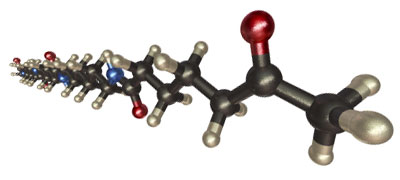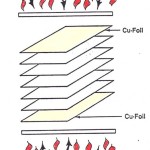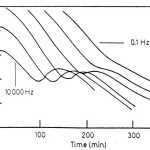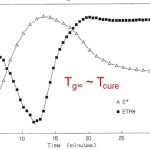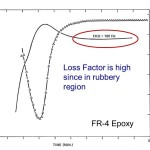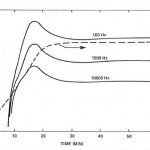In the previous posts in this series we have presented the fundamentals of dielectric cure monitoring and have shown how the dielectric loss factor can be a way to monitor the viscosity changes that occur during thermoset curing. The previous posts also showed how the frequency response can be observed to determine either the glass transition temperature on heating or ... [Click to Continue...]
Dielectric Cure Monitoring Part 8: An Interesting Experiment
In this post we will use all of the information presented in the series and show a very interesting case study on how dielectric measurements in conjunction with complex viscosity measurements can shed light on the physical changes occurring during thermoset curing. We have seen that dipoles can be used to determine both the glass transition region and if vitrification is ... [Click to Continue...]
Dielectric Cure Monitoring Part 7: Dipoles in Action
In this post we will continue our discussion of how using simultaneous complex viscosity and dielectric loss factor measurements can provide insight into the non-isothermal curing of thermoset resins. In the following figure, the complex viscosity and dielectric loss factor are plotted as a function of time for a Bis-maleimide Triazine Epoxy resin system. The fully cured ... [Click to Continue...]
Dielectric Cure Monitoring Part 6: Simultaneous Viscosity and Dielectric Loss Factor Measurements
In the last post we described the experimental setup for making simultaneous viscosity (dynamic complex viscosity) and dielectric measurements. In this post we will dive a bit deeper into how to use this method to probe the physical changes occurring during non-isothermal curing. To demonstrate how the dielectric loss factor changes as a function of fully cured glass ... [Click to Continue...]
Dielectric Cure Monitoring Part 5: Simultaneous Measurement of Viscosity and Dielectric Loss Factor
In this post will build on the basics presented in Parts 1-4. Back at IBM I was developing a fundamental understanding of the composite lamination process used to fabricate very expensive multilayer circuit boards. I was looking for a way to measure the viscosity in-situ during the lamination process but was challenged with how to embed a rheometer in a 10 opening ... [Click to Continue...]
